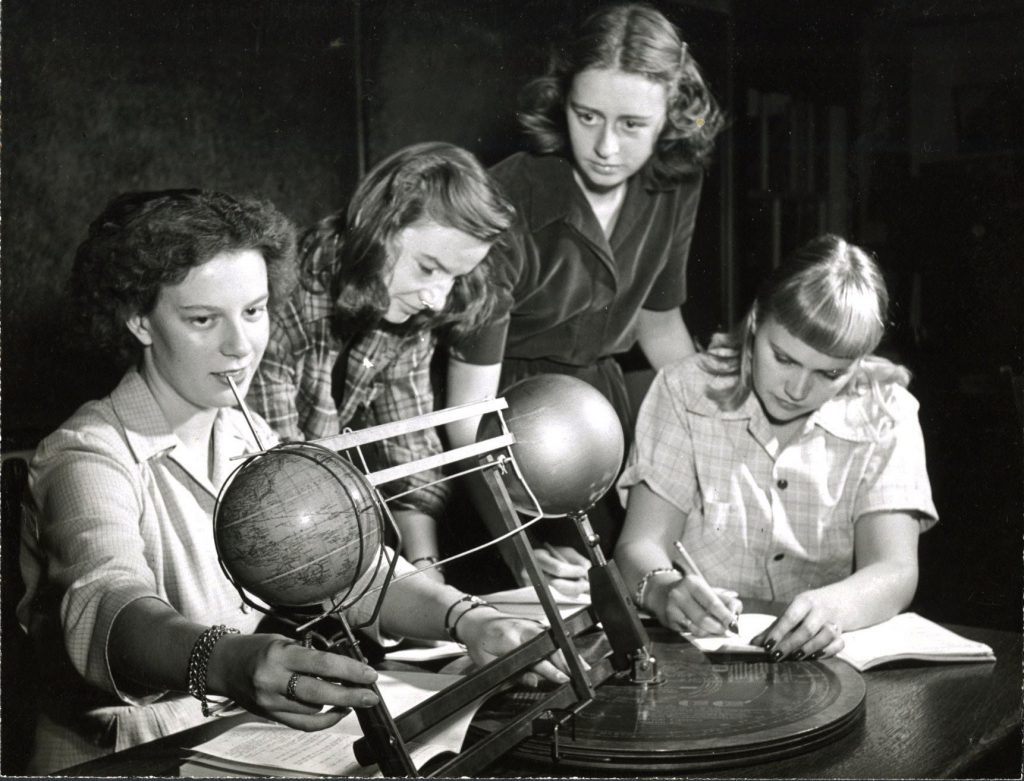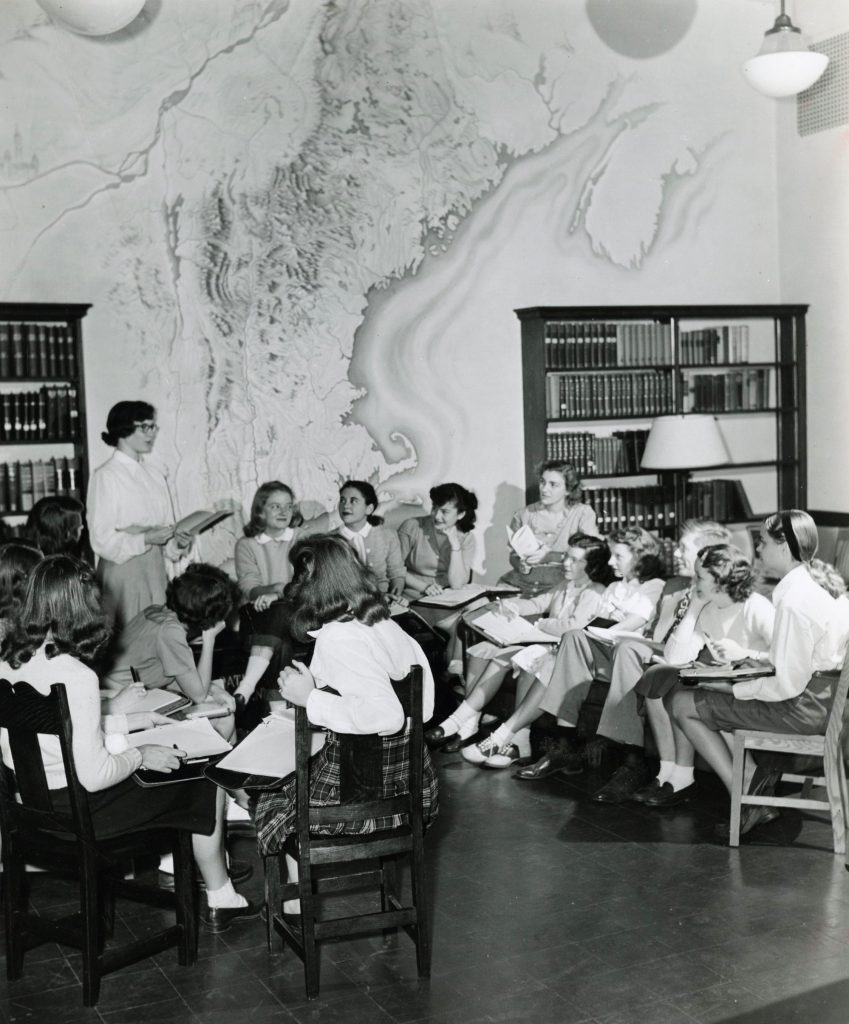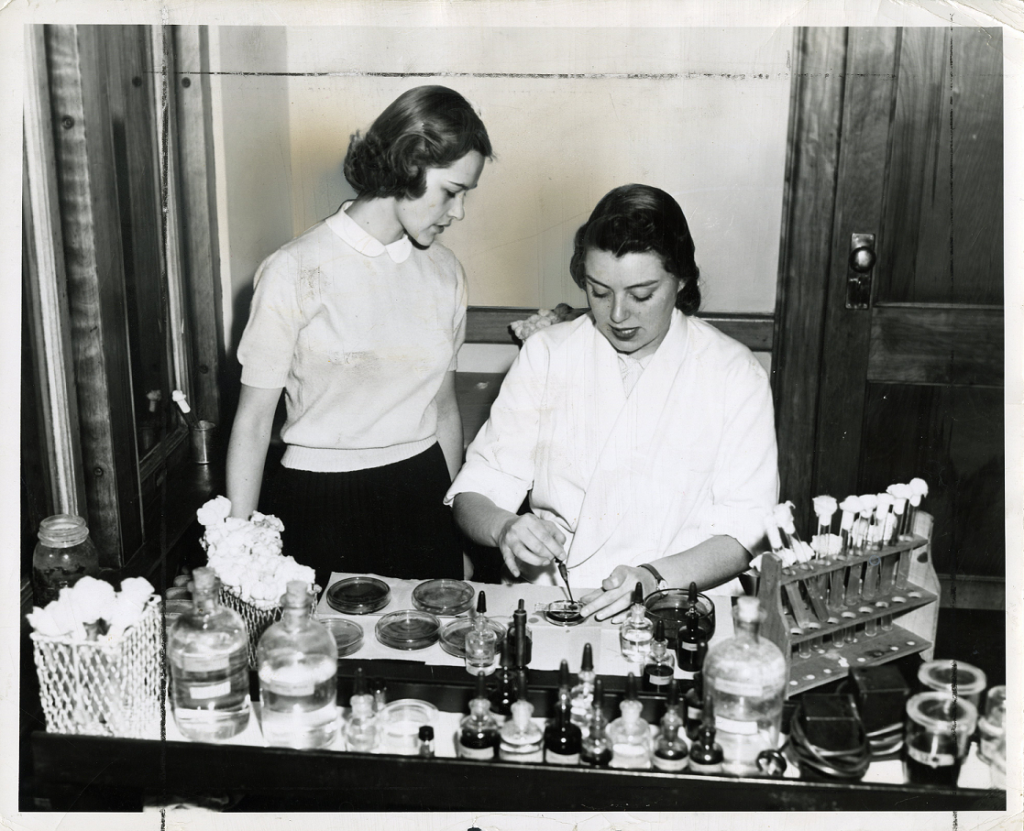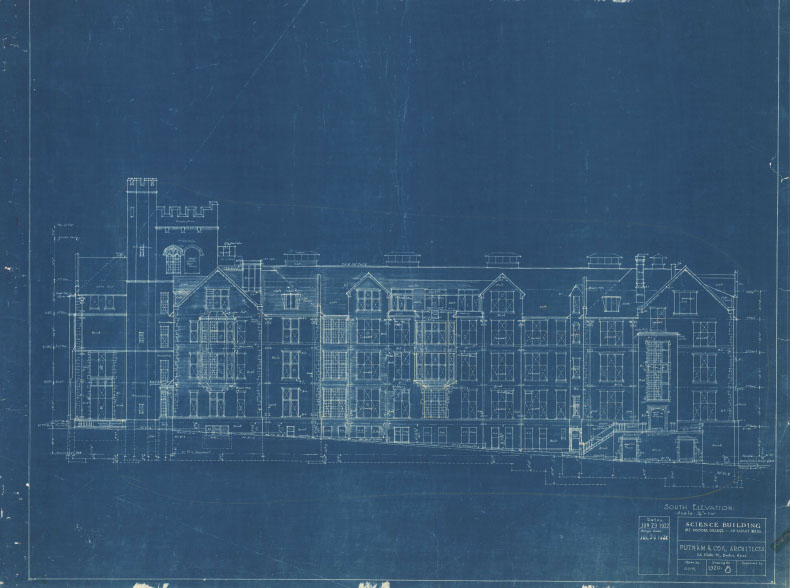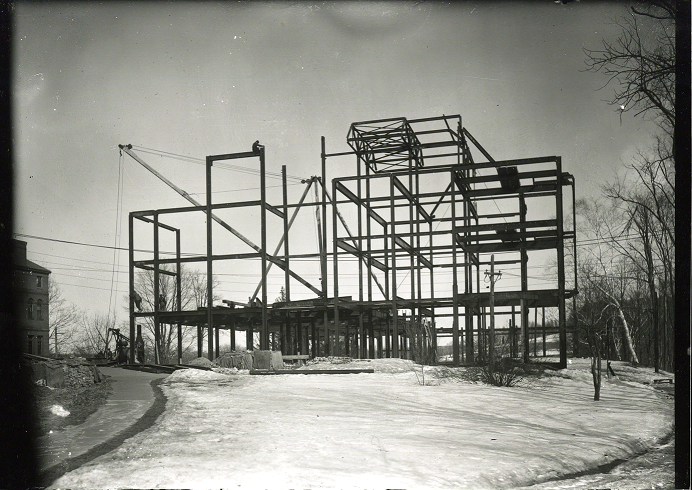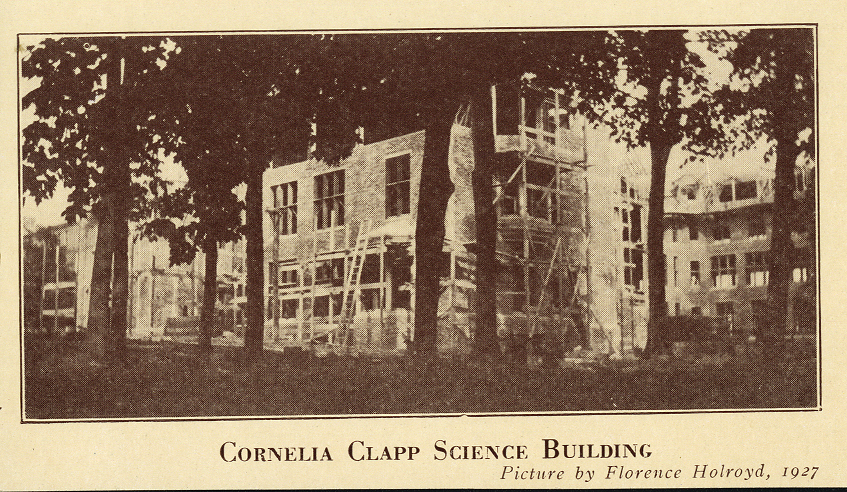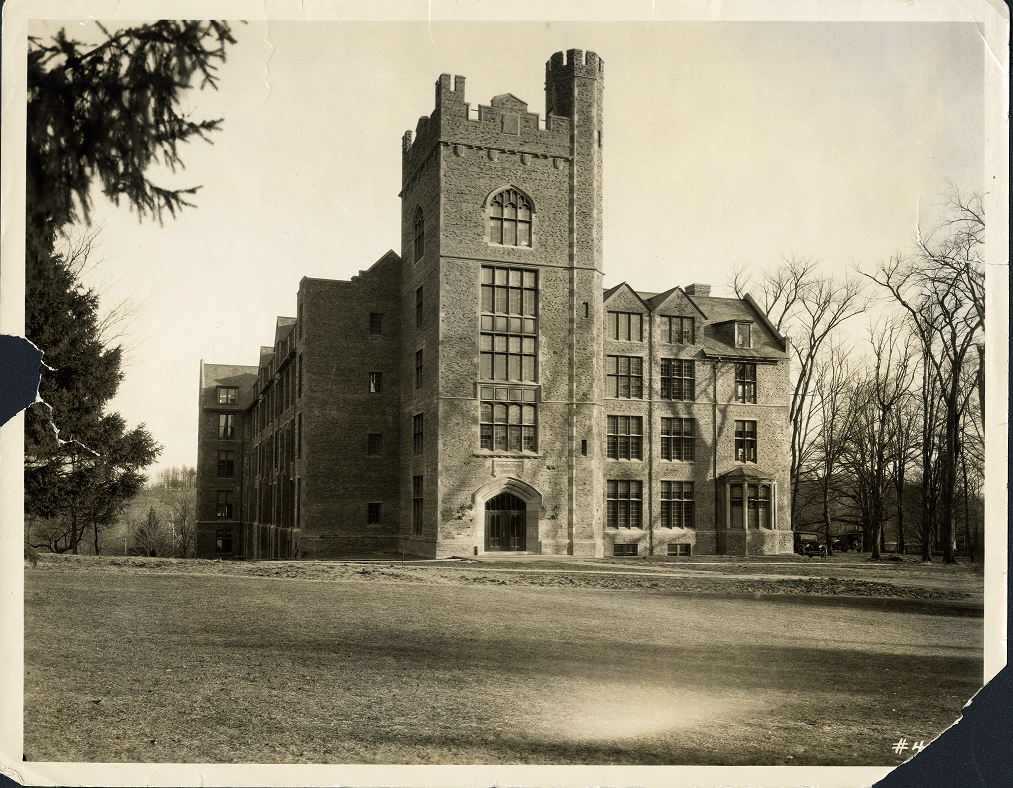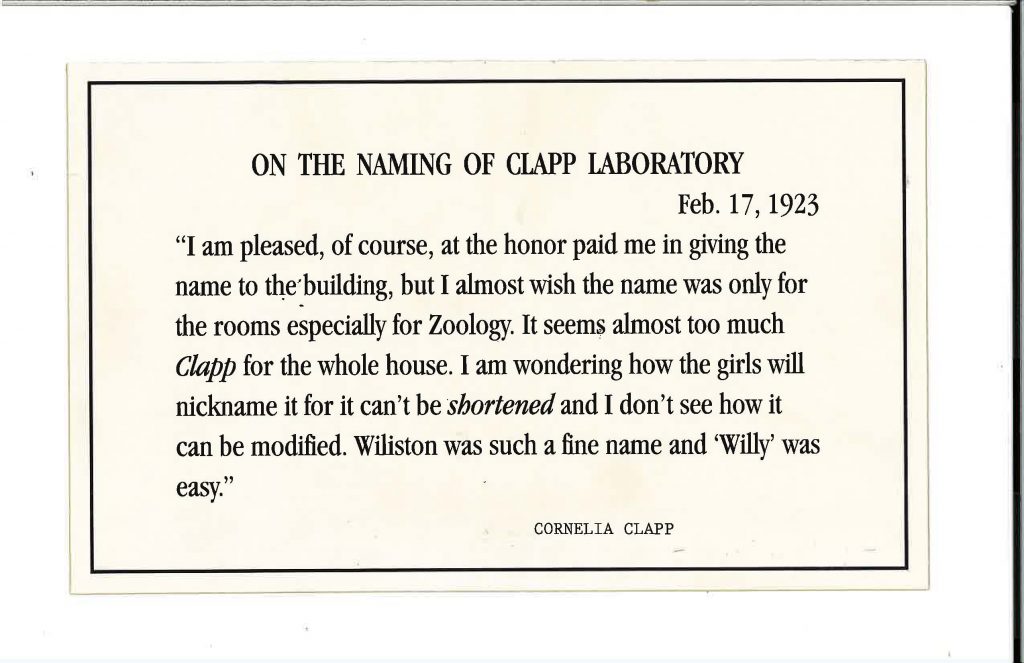Construction
Ground broke beginning construction the summer of 1922, long before funding for the $600,000 building was completed. President Wolley commented on this, “Not to build, however, was to endanger the future of the departments concerned, and cripple the teaching of biological sciences at a time when there is increasing demand for women trained in these lines.” (Report of the President, 1920-1923) The blueprints included plans for a museum wing, which the Board of Trustees agreed not to build due to costs.
“Men tramped about and yelled where habitually scholastic calm presided; little trucked clattered over rocks; a bundle of lead piping rolled to the ground with a thud and a clang as it hit against a stone; there was the metallic hiccough of the riveter, and the heaving of the donkey engine.”
“There was a good earthly smell – perhaps from the bricks and lumber, piled in heaps near the piping, was fragrantly fresh, as if sap were still running it in.”
I saw the great steel beams as a warp through which would be woven woof of masonry, of brick and wood, until the whole fabric should be complete, the pattern plain and fine, a building wrought by the shuttle of the engineer.”
Dedication
Cornelia Clapp Laboratory was completed in the summer of 1924, and was opened in the fall for student use. On Founder’s Day, November 7, the building was dedicated. Attended by Dr. Cornelia Clapp, the dedication was held after the Founder’s Day exercises. Speeches were given by Dr. Clapp, Mr. Skinner, and Professor E.G. Conklin of Princeton University. Two laboratories on the first floor were named the “Alumnae Laboratories”, dedicated for the alumnae whose contributions paid for the laboratories’ equipment.


